 Life & Style
Life & Style

Visiting jails is one unique idea of enjoying a holiday in Việt Nam, which is well-known for its heroic revolutions against invaders over the years.
Lê Hương
Visiting jails is one unique idea of enjoying a holiday in Việt Nam, which is well-known for its heroic revolutions against foreign invaders over the years.
Jails dating back to the French colonial and anti-American war periods have become top tourist destinations for those who want to understand the country and its history. The destinations are also tourism hubs for Vietnamese people for the upcoming Reunification Day (April 30).
Côn Đảo Prison in Côn Đảo Island southern province of Bà Rịa Vũng Tàu, Cây Dừa Jail in Phú Quốc Island in the southern province of Kiên Giang, Sơn La Jail in the northern province of Sơn La and the famed Hỏa Lò Prison in downtown Hà Nội are among the top destinations for both domestic and foreign tourists.
Côn Đảo Prison – hell on earth
There remains a system of jails on Côn Sơn (also known as Côn Lôn) Island, the largest island of the Côn Đảo Archipelago.
The jail system was built in 1861 by the French to imprison those considered a threat to the colonial regime.
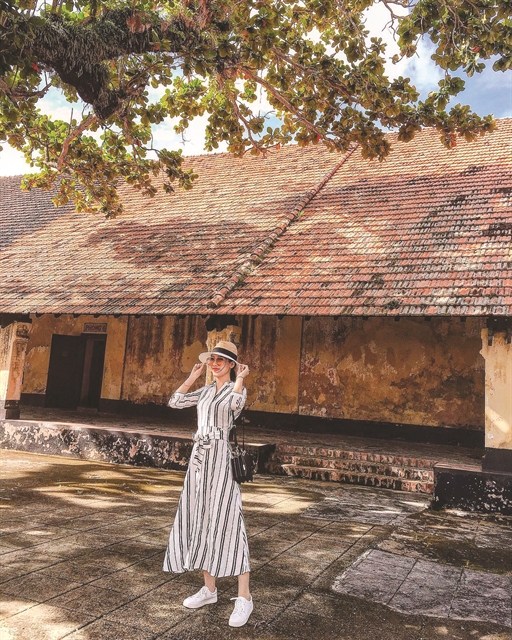
|
| A tourist poses for a photo at Côn Đảo Prison. Photo zingnews.vn |
The most famous parts of this system are the “tiger cages”. Each cell measures some 5sq.m, where several prisoners were imprisoned. There was no bed in the cell and no roof above, only metal bars so wardens could easily watch every single move by the prisoners. The jailers often tortured the prisoners using wooden sticks or by pouring lime powder on them.
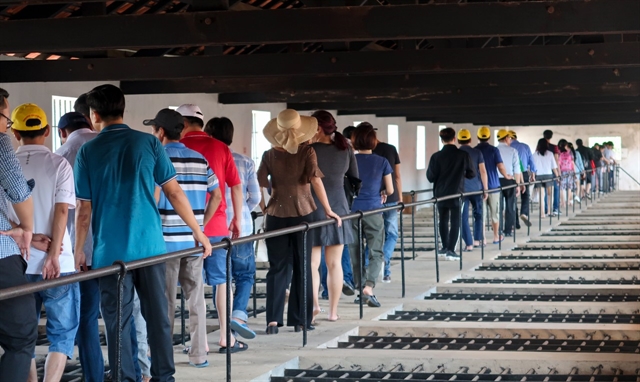
|
| Tourists visit the tiger cages area on Côn Đảo Island. Photo mientaycogi.com |
Another form of torture was a “sun bath” or “rain bath” where the prisoners were forced to stay naked in a cage without a roof, exposing them to the harsh sun or the torrential rain.
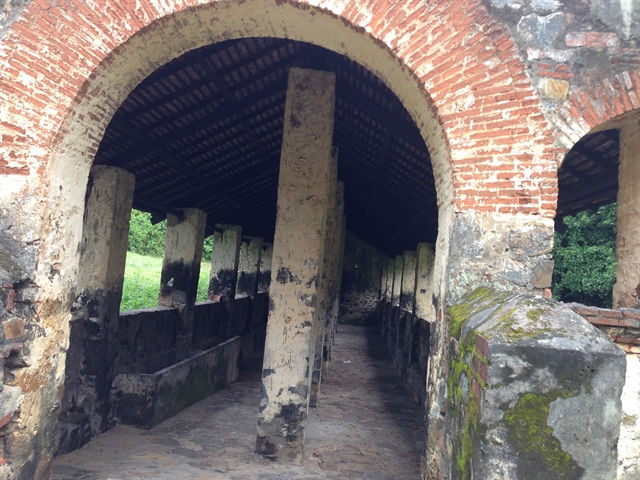
|
| The remnants of a cistern storing cows' dung and water used to torture prisoners on Côn Đảo Island. The prisoners would be submerged in the waste until worms developed in their bodies. They would suffer from eternal pain until death. The cistern was built in 1930 to torture communist soldiers in secret. VNS Photo Lê Hương |
Over 100 years, some 20,000 revolutionaries and other patriots were jailed, tortured or killed at the site, which is now a Special National Relic Site.
The jail system includes stations named Phú Sơn, Phú Hải, Phú Tường, Phú Thọ, Phú An, Phú Phong, Phú Hưng, and areas for special prisoners like Tiger Cages and Cow Cages.
A guided tour is the best way to learn about the prison system.
Cây Dừa Prison
Located on the fertile pearl island of Phú Quốc, the prison is a symbol of heroism and patriotism and a place that witnessed the cruelty of colonialism and imperialism.
At the end of 1966, the US aided and abetted Sài Sòn regime built the prison in An Thới Valley of Phú Quốc Island. The jail areas, residential areas and offices for the prison’s management board were built along Road 46.
By the end of 1972, the prison had 12 areas numbered from 1 to 14. Each area could host up to 3,000 prisoners.
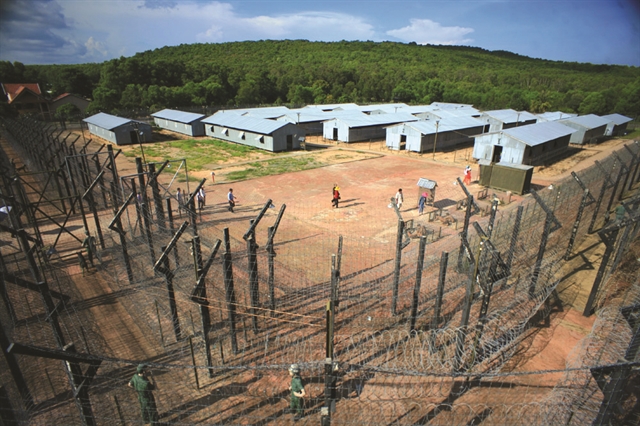
|
| An overview of Cây Dừa Prison on Phú Quốc Island. Photo bestprice.vn |
Each smaller area had nine rooms for prisoners, two halls for torturing or for some special prisoners. The smaller area had a kitchen for prisoners to cook their meals.
The jailing areas were guarded carefully and surrounded by barbed wire fences.
On the morning of January 21, 1969, 21 prisoners escaped from the jail using a tunnel they had dug. Over the course of six months, they had secretly made the 120m long, 60cm wide tunnel using simple tools like spoons and metal bars.
The prison was used for six years between July 1967 and January 1973. During that time, 4,000 people died in the jails and thousands of those who survived were handicapped for the rest of their lives.
Today, the prison has displays showing the cruel torture that the Sài Gòn regime inflicted on revolutionaries and liberation fighters.
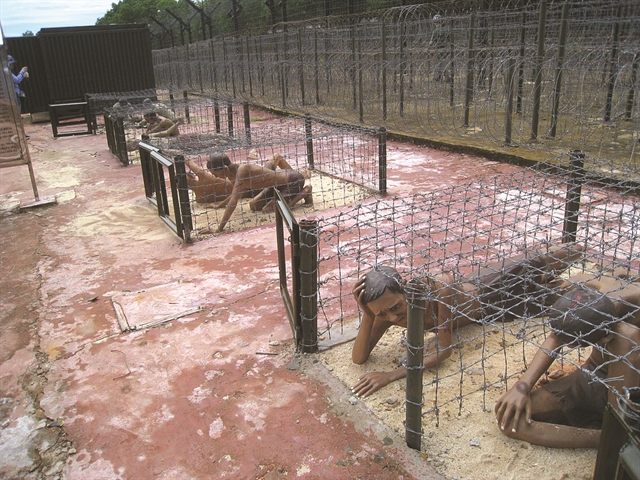
|
| Clay replicas of liberation fighters imprisoned at Cây Dừa Prison in Phú Quốc Island. Many of them were kept in tiny cages without any roofs under the hot sun. Photo innotour.vn |
“I think no history lesson in a class is better than a trip to visit this prison,” said student Lương Hà Vinh from Hà Nội. “My class organised a field trip here and I was extremely moved at the images I saw here. I feel more appreciation for the freedom and independence that my generation enjoys today thanks to the sacrifice of revolutionary soldiers in the past.”
The prison was recognised as a National Historic Site in 1995 and hosts some 10,000 visitors each year.
Sơn La Prison
The French kept more than 1,000 Vietnamese revolutionaries and other patriots between 1930 and 1945 at Sơn La Prison, which is located in Sơn La City, the northern province of Sơn La.
According to guide Mai Thúy Loan, the French could not kill all the Vietnamese patriots imprisoned at once so they used the harsh weather and hard labour to kill them gradually, spiritually and physically.
The prison was first built in 1908 but then was enlarged in 1930-1940.
The prison became akin to a school for distinguished communists who made considerable contributions to the victory of August Revolution in 1945 like Tô Hiệu, Lê Duẩn, Trường Chinh, Nguyễn Lương Bằng, Văn Tiến Dũng, Lê Đức Thọ, Nguyễn Văn Trân, Lê Thanh Nghị, and Trần Quốc Hoàn.
Tô Hiệu died in the prison at the age of 33 and had been a member of the Communist Party for 14 years. He was also jailed in Côn Đảo before being moved as a special case to Sơn La Prison.
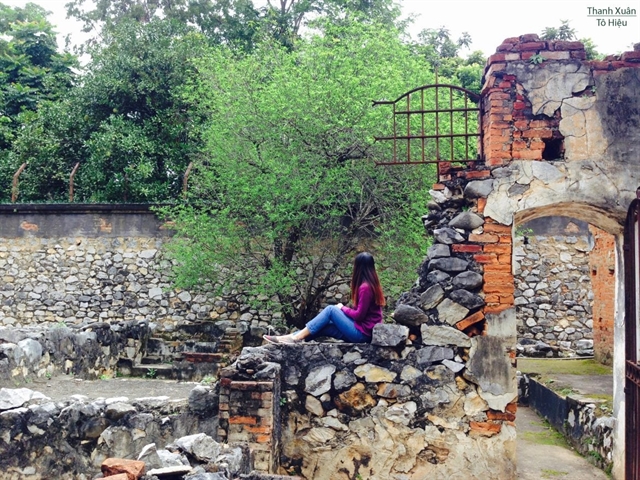
|
| A visitor poses for a photo by Tô Hiệu Peach Tree at Sơn La Prison. Photo hoidulich.net |
Despite the harsh conditions of the prison and suffering from various diseases, Tô Hiệu still persuaded many soldiers and guards at the prison to join the revolution.
To this day, the site still has a peach tree named after the brave communist Tô Hiệu.
“Despite the bombs by the French in 1952 and by the American air force in 1965 to erase the traces of cruelty, the tree has still grown strongly as a miracle,” said Loan. “The blossoms come into full bloom every spring as eternal evidence of history, confirming the strong living power and will of communists who were jailed in the prison.”
War veteran Trần Hữu Mạnh from Hưng Yên Province said he visited the prison every spring with his comrades.
“Such a historical site is so valuable in the present time,” he said. “It helps educate the young generation on our heroic past fighting against the most powerful invaders.”
Prison in downtown Hà Nội
Few foreign tourists miss a visit to Hỏa Lò Prison in the bustling streets of Hà Nội.
It was built by the French at the end of the 19th century in 1896 in the original area of Phụ Khánh ceramic village in Hà Nội.
Many famed Vietnamese patriots were jailed here including Phan Bội Châu, Lương Văn Can, Nguyễn Quyền, Hồ Tùng Mậu, and Nguyễn Lương Bằng, and five secretaries of the Communist Party including Nguyễn Văn Cừ, Trường Chinh, Lê Duẩn, Nguyễn Văn Linh and Đỗ Mười.
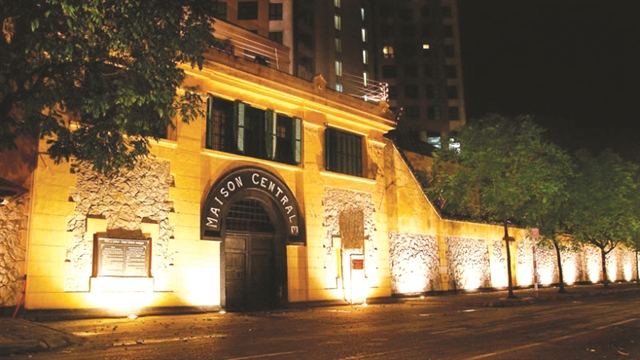
|
| "Hà Nội Hilton" by night. The Hỏa Lò Prison in downtown Hà Nội offers frequent exhibitions as well. Photo svhtt.hanoi.gov.vn |
On October 10, 1954, after liberating the north from the French, the Vietnamese Government put the prison into temporary use to jail lawbreakers.
Between August 1964 and March 1973, the prison housed American pilots shot down while bombing North Việt Nam, during which the prison was wittily named the “Hà Nội Hilton” by the pilots. The pilots included Douglas Peter Peterson, who then became the first American ambassador to the Socialist Republic of Việt Nam, and John McCain, an American senator who ran for president in 2008.
Part of the original prison was renovated in 1993 as a historical relic site of the city and now receives visitors every day.
The prison now regularly hosts exhibitions as well as special tours. VNS